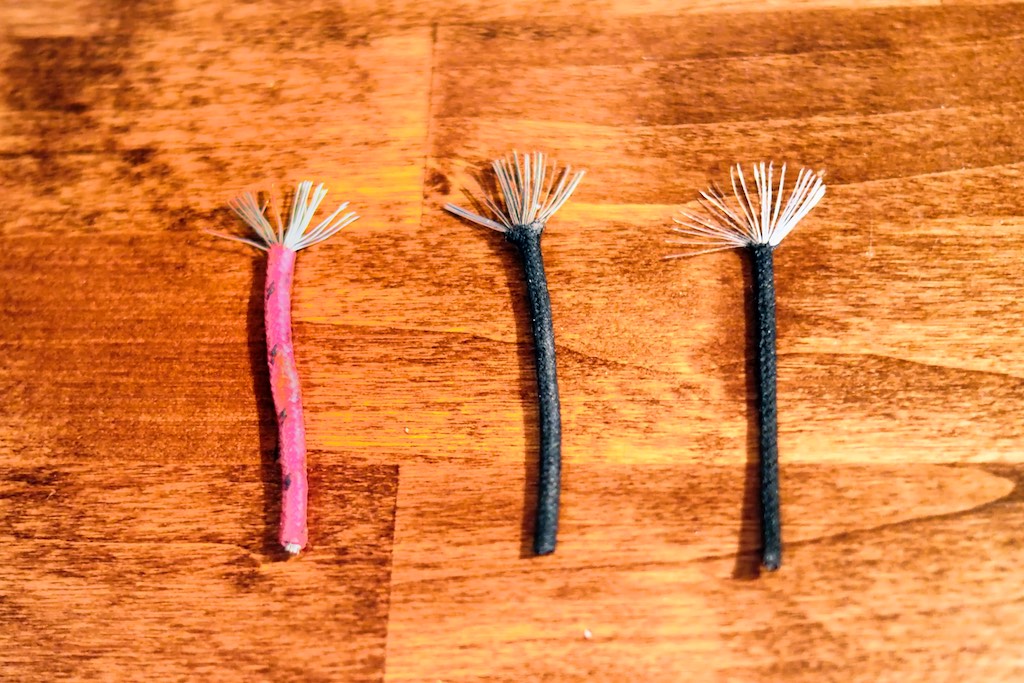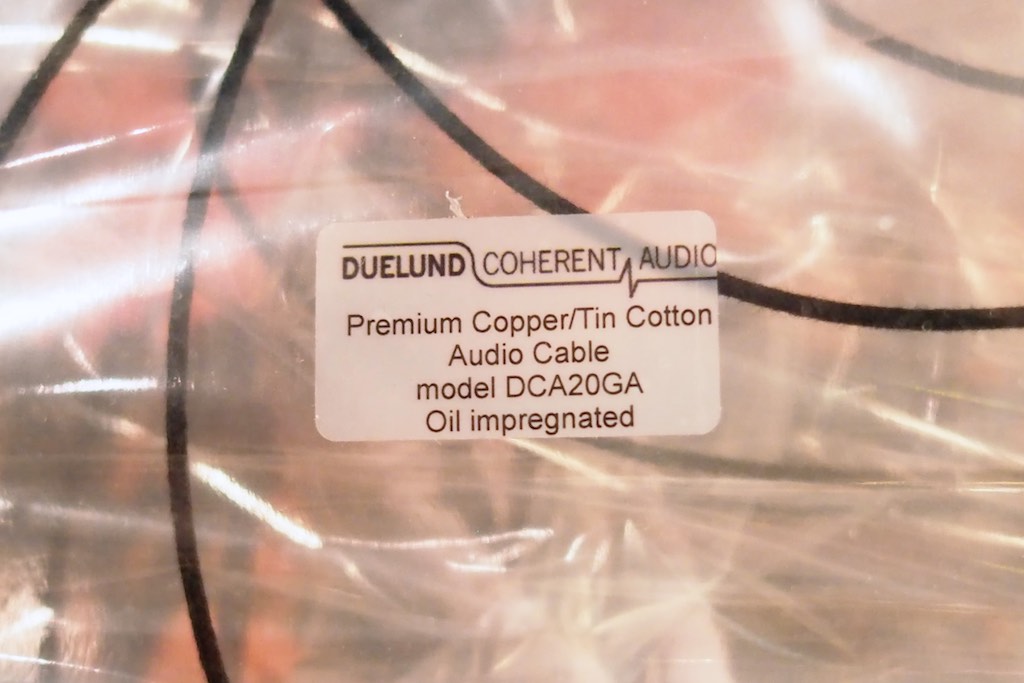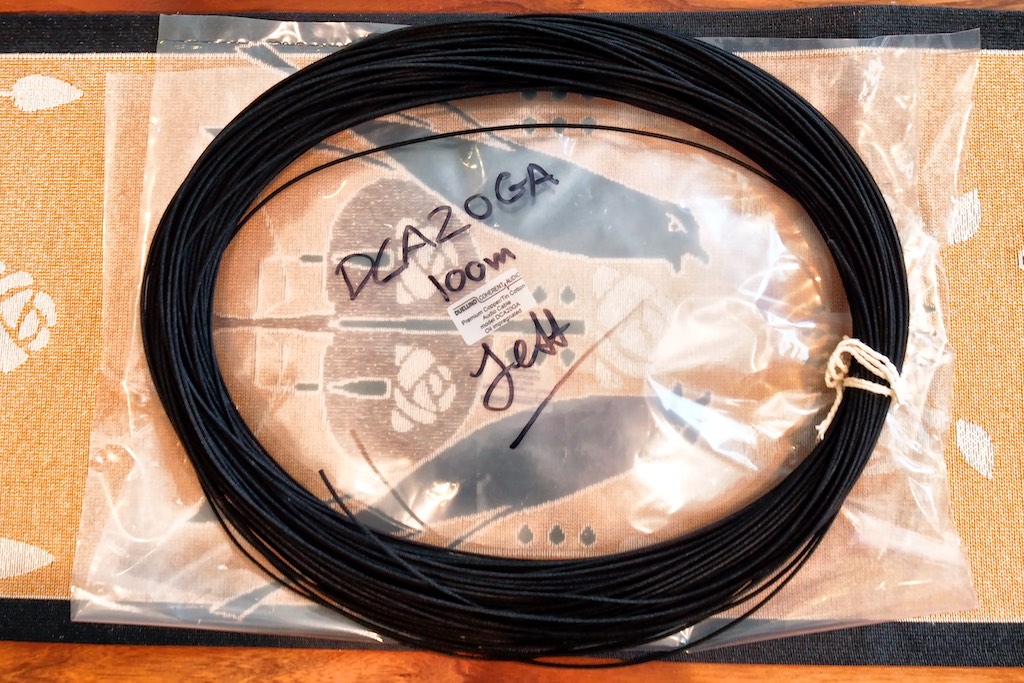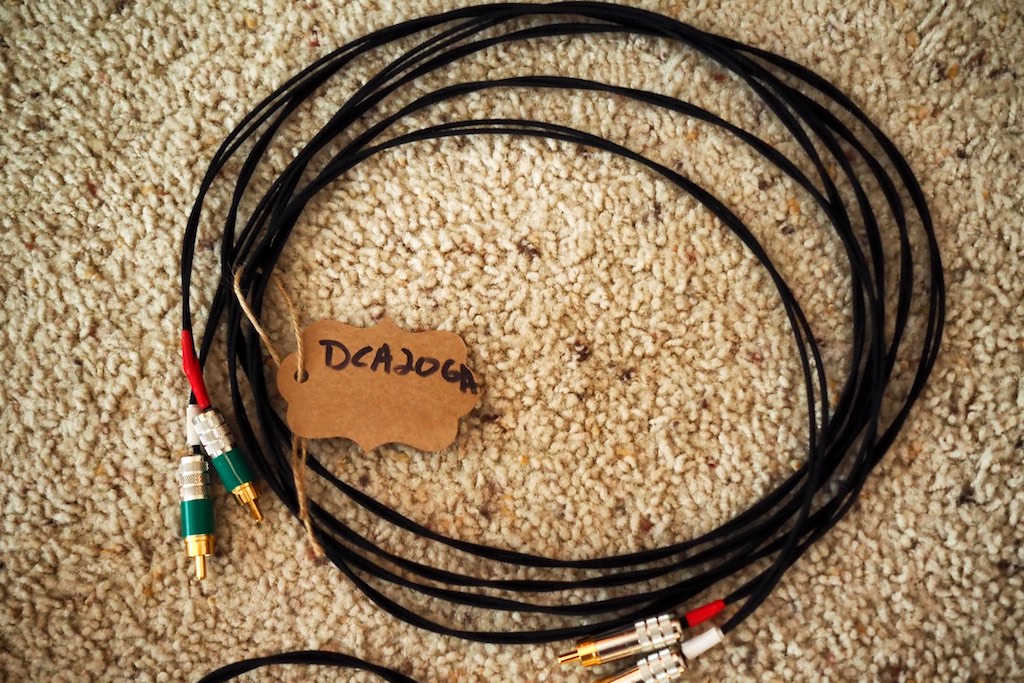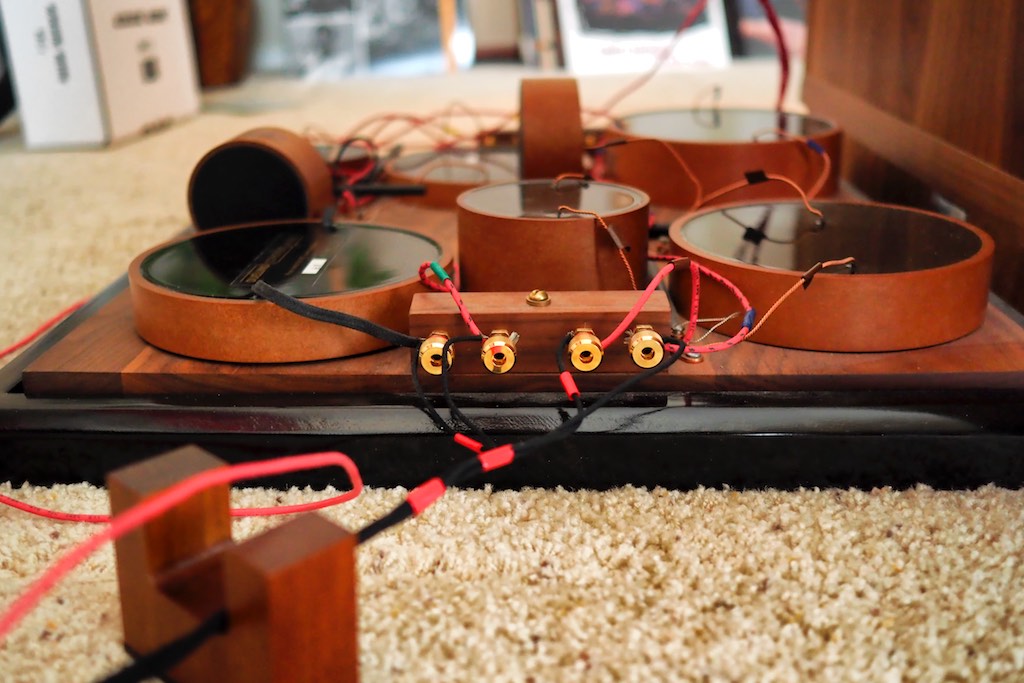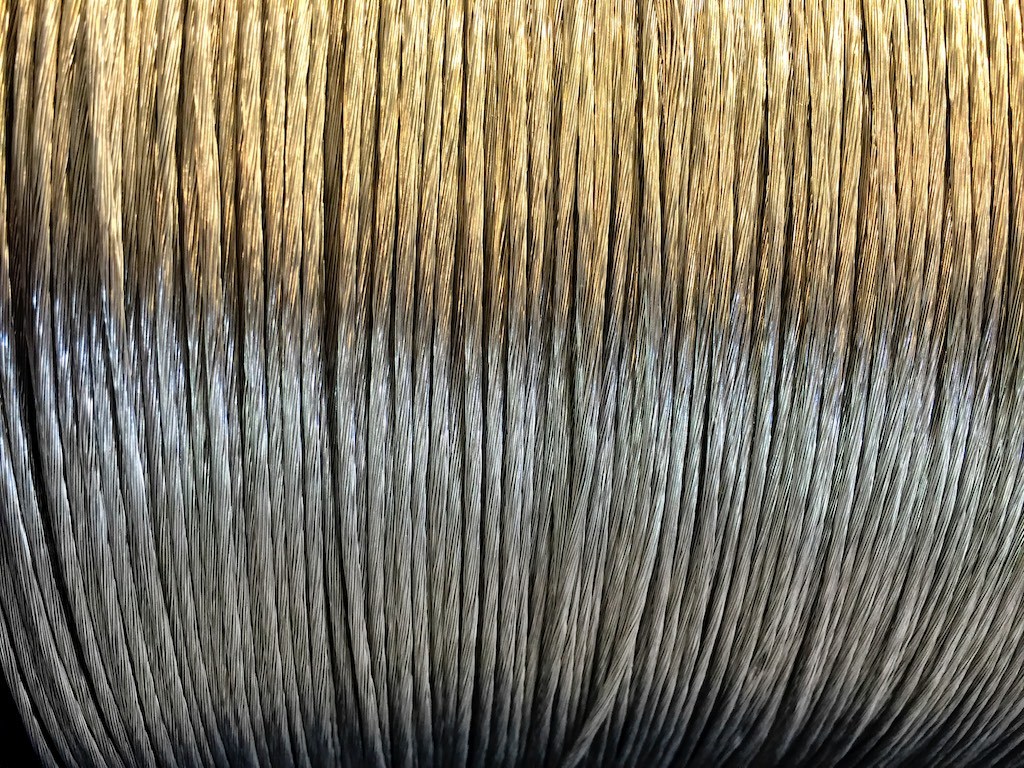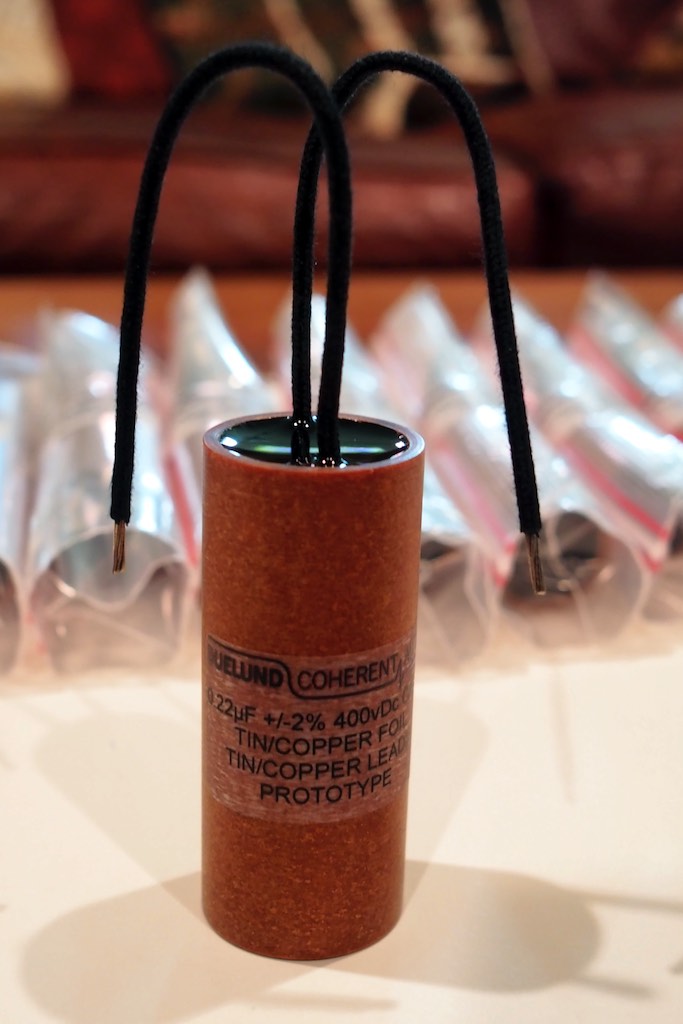There's so many good audio things happening right now I thought I'd better write a quick survey for you about all the things that are in play, and my 'roadmap' for writing about it all in the near future.
¸¸.•*¨*•♫♪¸¸.•*¨*•♫♪¸¸.•*¨*•♫♪
As you know, the last year or so has resulted in a significant revelation for me in audio, and that is the life-like tone & vivid musicality of tinned-copper wire used as speaker cables, interconnects, and internal loudspeaker wiring.
This tinned-copper wire revelation began to unfold for me when Yazaki-san introduced me to his his 'real sound' choice for speaker cables (Western Electric WE16GA) and interconnects (Belden 8402 microphone cable).
My tinned-copper adventure continued when I built a USB tinned-copper interconnect for my USB DAC with some tinned-copper 'pushback wire' that guitarists like to use for rewiring their guitars to achieve 'vintage tone'.
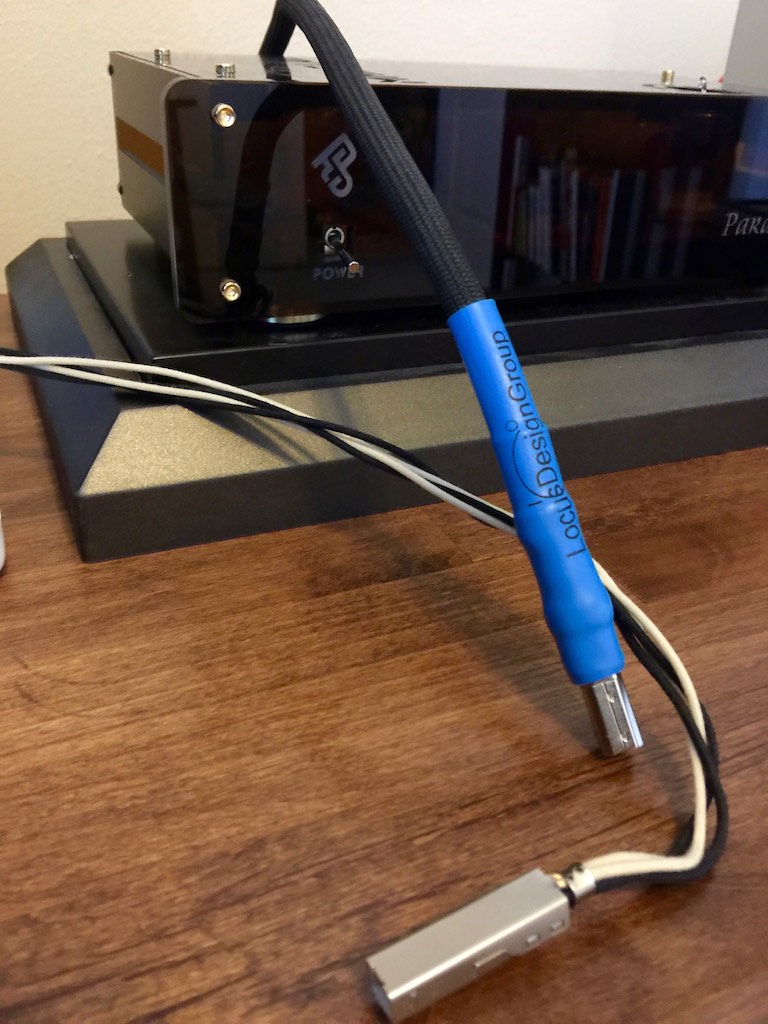
My DIY 'pushback wire' USB interconnect has outperformed every USB interconnect I've tried and it cost less than $10 to build.
It turned out that my humble DIY pushback wire USB interconnect significantly outperformed all of the spendy USB interconnects I had on hand, and it is still doing duty in my Stokowski A7 Voice of the Theatre system.
That glimpse into the electric guitarist paradigm of 'vintage tone' was an aha moment for me as I realized that the guitarists 'vintage tone' paradigm had a significant Venn diagram overlap with Yazaki-san's 'real sound' paradigm for audio.
'Vintage tone' is an important topic among guitarists, both acoustic and electric guitarists. The term 'vintage tone' refers to the tone & musicality of the best guitars from history, the Stradivari of the guitar world.
The traits that produced those guitars with 'vintage tone' differ between the parallel universes of the acoustic and electric guitar worlds, but the light went on when I was reading the electric guitarists 'vintage tone' descriptions involving the types of wood involved, the vacuum tube amplification, the tinned-copper 'vintage tone' wire, 'vintage tone' capacitors like Black Beauties or Bumblebees, and 'vintage tone' resistors like carbon comp Allen Bradleys and wirewound resistors.
At about that same time I noticed that all my vintage McIntosh vacuum tube electronics were wired internally with various kinds of vintage tinned-copper Western Electric wire.
Voilà! The worlds of the electric guitarist's 'vintage tone' and the Yazaki-san's 'real sound' merged for me and I began to imagine Stradivari-like audio equipment with wood chassis, vacuum tubes, tinned-copper wire, Allen Bradley carbon comp & wirewound resistors, and Black Beauty & Bumblebee capacitors - what a vision!
This merging of musical cultures emphasizing the wonderful tonal & musical properties of tinned-copper wire made a big impression on me as I continued to explore their use in hi-fi.
My conclusion over time was that I enjoyed music reproduction from my stereo more when using tinned-copper speaker cable, interconnects, and internal wiring, than I did from the copper, silver, or gold, wiring that I had tried in the past.
It seems to me that tinned-copper conductors have the best traits of copper, silver, and gold conductors, and even add a few unique traits of their own that the others just don't have.
The best tinned-copper conductors deliver an extremely vivid tone color, superb dynamic response, melodic sophistication, harmonic complexity, live-like timbral complexity, spooky imaging presence, natural live-like level of resolution, generous portrayal of soundstage & soundspace, a presentation so breathtakingly musical, and with such high level of intensity of emotional engagement, that I think is completely unique in the world of conductors.
Then the very astute Frederik Carøe of Duelund Coherent Audio recognized that something special was going on with this vintage Western Electric WE16GA tinned-copper wire I was using, and set out to produce a better version of it, the Duelund Coherent Audio DCA16GA.
Frederik worked closely with a specialty manufacturer to develop the 26-strand, 0.25mm diameter, copper conductors tinned with elemental tin that are used in the Duelund Coherent Audio DCA16GA wire.
Frederik's interpretation of the vintage WE16GA wire improved upon its performance by going even more vintage and eschewing the Western Electric's use of plastic dielectric, and covering his elemental-tin coated conductors with a natural materials oil-soaked and baked cotton dielectric, which harkens back to Western Electric's earliest days of wire production before plastics were common place.
The resulting Duelund Coherent Audio DCA16GA was simply spectacular, both sonically & musically, and I thought it bettered the already superb WE16GA in every way.
I like the way the legendary Jim Smith put it in his Quarter Notes Newsletter:
“Jeff Day is a trouble-maker! He keeps finding things that I have to try. I loved the Western Electric 16 GA speaker cable that he recommended. Then he announced that the Duelund 16 GA is even better!
So I had to try it. The good news is that both cables are very inexpensive. In fact, my 10’ bi-wire runs to each channel of my Duelund outboard crossovers (that’s 40’ of wire plus wire for the crossovers and the leads into the Tannoys), plus the interconnects cost me under $300 TOTAL! Was it worth doing?
I’d say with complete confidence that it is the most musically engaging sound I have ever heard. The caveat may be that this is only because I have 96dB efficient loudspeakers. Jeff’s are even more efficient. So I cannot say with any certainty that they will be as good with low efficiency loudspeakers.
On the other hand, it’s not too costly to give them a try…
BTW – trouble maker or not, Jeff’s blog is always a source of useful info, and always from a musical involvement standpoint.”
First, thanks to Jim Smith for his kind words about my labors here at Jeff's Place, and his astute observations about the Western Electric and now Duelund Coherent Audio tinned-copper DCA16GA.
You can read my review of the Duelund Coherent Audio DCA16GA tinned-copper tone-wire as speaker cables, interconnects, and loudspeaker wiring, at Positive Feedback here.
Owing in part to the enormous popularity of the Duelund DCA16GA with hi-fi enthusiasts & music lovers around the world, Frederik didn't stop with the DCA16GA, he went on to produce the Duelund Coherent Audio DCA20GA tinned-copper wire using the same proven natural materials formula of an oil-soaked & baked cotton dielectric wrapped around the twenty-six strands of 0.15mm diameter copper conductors coated with elemental tin.
I'm now using the DCA20GA as high-frequency speaker cables on the Duelund CAST crossovers of my Tannoy Westminster Royal SE loudspeakers, and as RCA interconnects between my vintage McIntosh MX110Z tuner-preamplifier and my vintage McIntosh MC30 monaural amplifiers.
My results are so good with the combination of Duelund DCA16GA & DCA20GA speaker cables & interconnects that I'm using, that I haven't touched them since putting them in place.
I'll tell you what, Duelund Coherent Audio DCA16GA and DCA20GA are tinned-copper cables done right!
But there's more tone-wire news, because Frederik has developed the DCA12GA, which has a lot more tinned-wired conductor in it that will come in handy for lower efficiency speakers. The Duelund DCA12GA has 65 strands of 0.25mm tinned-copper conductors, compared to the DCA16GA’s 26 strands of 0.25mm tinned-copper conductors, giving more than double the amount of conductors of the DCA16GA, and following the successful formula of the DCA16GA & DCA20GA, the DCA12GA is wrapped with the same oil-soaked & baked cotton dielectric, and should be available from Parts ConneXion in the March 2017 timeframe.
I have a two data-point theory about tinned-copper wire with the DCA16GA & DCA20GA that the greater amount of tinned-copper metal in the wire the greater its vividness, and I'm really looking forward to giving the DCA12GA 'shotgun' tone-wire a listen to see if a third data-point will help confirm my theory.
Here's what's so cool about that: Having DCA12GA, DCA16GA, and DCA20GA tinned-copper tone-wires will allow for a tremendous palette of sonic & musical traits that will allow one to dial in the vividness of tone color, dynamic response, melodic sophistication, harmonic complexity, timbral complexity, imaging presence, level of resolution, soundstage & soundspace, and overall musicality & emotional engagement, exactly the way that is best for you with your associated equipment, listening room character, and personal tastes.
After I've had a chance to get more experience with the DCA20GA - and the coming DCA12GA - so that I can fully characterize its performance in terms of their sonics and musical prowess, I'm going to write a survey article for Positive Feedback of the DCA12GA, DCA16GA, and DCA20GA.
This will help give you some ideas on how I've used it to maximize the performance of my various test hi-fi's here at Jeff's Place, like my Westminster Royale SE & vintage McIntosh based system; my Altec A5 Voice of the Theatre, vintage McIntosh, and Leben based system; my Altec A7 Voice of Theatre and SPEC based system; and my Harbeth Super HL5 and Leben CS600 based system, which should give a fairly broad set of test systems to fully characterize the Duelund family of tinned-copper tone-wires.
In the mean time I also have plans to rewire the high-frequency section of my Westminster's Duelund CAST crossovers with the Duelund DCA20GA, to build a pair of shielded Duelund DCA20GA interconnects to try on my Intact Audio SUT, and a tonearm rewire project for my Schick tonearm using the DCA20GA. It should be fun!
¸¸.•*¨*•♫♪¸¸.•*¨*•♫♪¸¸.•*¨*•♫♪
For those new to Jeff's Place, a little background is in order. Frederik had been teasing me for a while with the promise of a Duelund surprise that he had cooked up that he thought that I would like, and when the surprise arrived - the prototype 0.22uF Duelund CAST tinned-copper capacitors - Frederik's surprise completely blew my mind!
Inspired by the tone & musicality of the Duelund DCA16GA tinned-copper tone-wire, Frederik secretly built up a set of prototype 0.22uF Duelund CAST tinned-copper capacitors using the same labor intensive, hand-crafted, natural materials philosophy that he uses for all of his Duelund CAST capacitors.
I got busy with the prototype Duelund CAST tinned-copper capacitors and used them in Modification B for my MX110Z (above), where I made changes to the first stage cathode follower of the high level input, by replacing two key pairs of 0.1uF capacitors at C93 & C95 and C94 & C96 with a pair of the 0.22 uF prototype Duelund CAST tinned-copper capacitors (see schematic above).
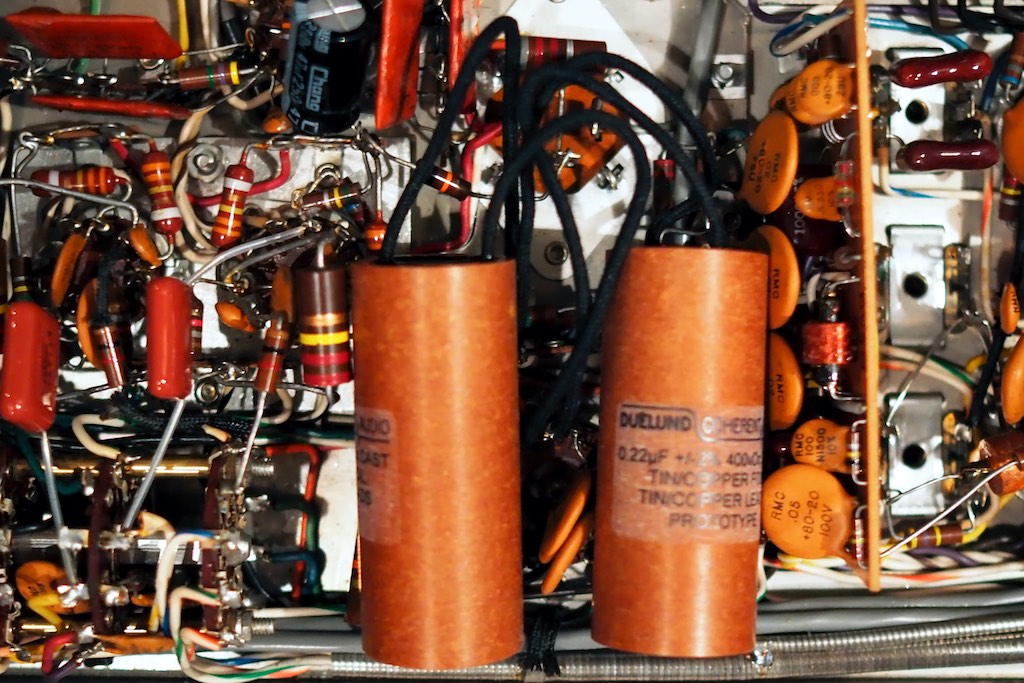
A pair of prototype 0.22uF Duelund CAST Sn-Cu capacitors that I've soldered into my vintage MX110Z McIntosh tuner-preamplifier.
The performance of the prototype Duelund CAST tinned-copper capacitors in Modification B was so mind-blowing that I was really quite beside myself with the results. The prototype Duelund CAST tinned-copper capacitors bested every capacitor I have tried in Modification B, both vintage and modern, and by no small margin, it was a complete slap down!
The prototype Duelund CAST tinned-copper capacitors were a revelation for me, and pretty much were the embodiment of every musical & sonic trait I desire in a capacitor. They Duelund's have the rich musicality of such mythic capacitors as the Bumblebees and Black Beauties of yore, but are worlds more advanced in their sonic capabilities compared to modern production capacitors I've had experience with, some of which were extremely good.
I also tried the prototype 0.22uF Duelund CAST tinned-copper capacitors in my Altec A5 Voice of the Theatre crossover project with the same stellar results, and it made me dream of what Westminster-sized 6.8uF Duelund CAST tinned-copper capacitors might perform like in the C1 positions of my Westminster's Duelund CAST crossovers.
After my little experiment, I pulled the prototype 0.22uF Duelund CAST tinned-copper capacitors out of the my Altec A5 Voice of the Theatre project crossovers, because I have other plans for them.
I want to try the prototype 0.22uF Duelund CAST tinned-copper capacitors in the MX110Z power supply mod's at C2 and C3 (below) that Yazaki-san had suggested earlier in our MX110Z capacitor adventure, but just didn't work out with the other capacitors we had tried.
I have to pop the bottom off my MX110Z to see if the jumbo-sized prototype 0.22uF Duelund CAST tinned-copper capacitors will even fit in the available space in for Mod C, but if they do, I want to give Modification C another try!
By the way, Frederik now has the Duelund CAST tinned-copper capacitors in production, and they are available in North America from Parts ConneXion in limited quantities.
¸¸.•*¨*•♫♪¸¸.•*¨*•♫♪¸¸.•*¨*•♫♪
I realized as I was writing this last part about the prototype0.22uF Duelund CAST tinned-copper capacitors that if I tried to incorporate all the news I have to tell you about into one post it would be way to long, so I'm breaking it up into parts, with this being Part 1.
Ok, I've got to go, but check back tomorrow for a bunch more news I want to share with you!
As always, thanks for stopping by, and may the tone be with you!







